Xuron Corp. | 9180ET: Professional Photo-Etch Scissors
Reviewed by Kevin Futter
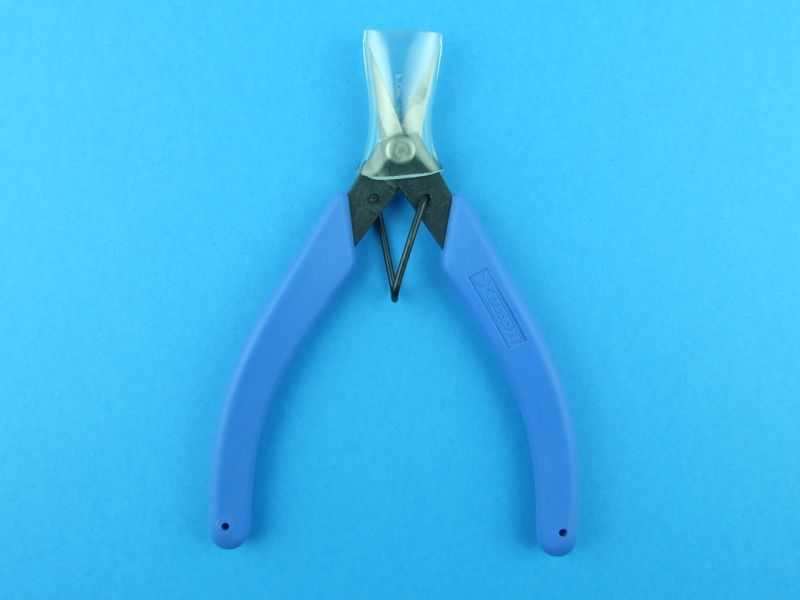
US-based Xuron Corp. is a well-known maker of hand tools for modellers and hobbyists, with an extensive range of shears and cutters for every conceivable use case. Here we take a look at the company's 9180ET Professional Photo-Etch Scissors. This tool is described in Xuron's product catalogue like so:
Photo Etch accessories are now more popular than ever with scale modelers and model railroaders. Our 9180ET Professional Photo-Etch Scissors was developed specifically for easily, cleanly and safety cutting without damaging the delicate parts. Extra-long and ultra-sharp scissor blades, along with stable, curved handle grips and a return spring, all combine to create a tool that offers precision cutting with stability and control. Recommended for use on photo-etch parts only.
The business end of these cutters is protected by a chunky sleeve, made from soft, clear plastic. This is a good thing, as not only are the tines relatively thin and delicate, but they're also very sharp! When fully closed, the shearing action of the tines takes them past one another:
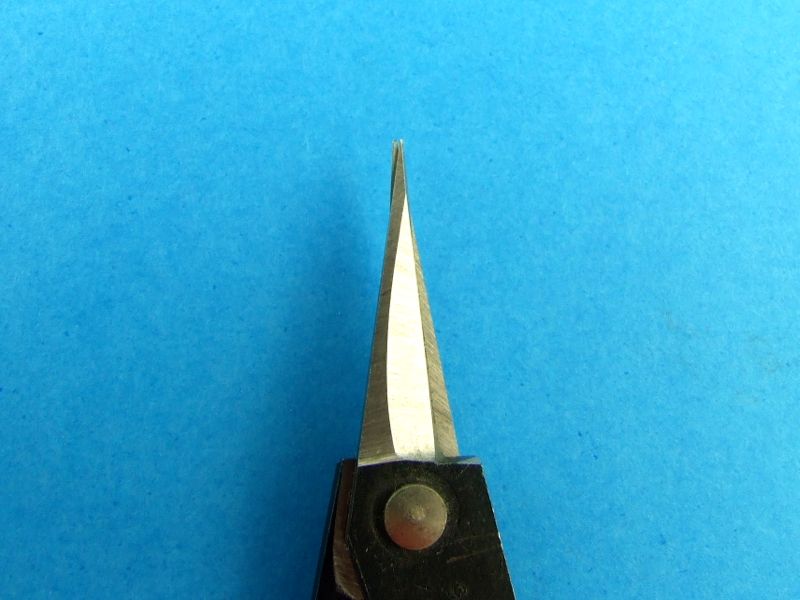
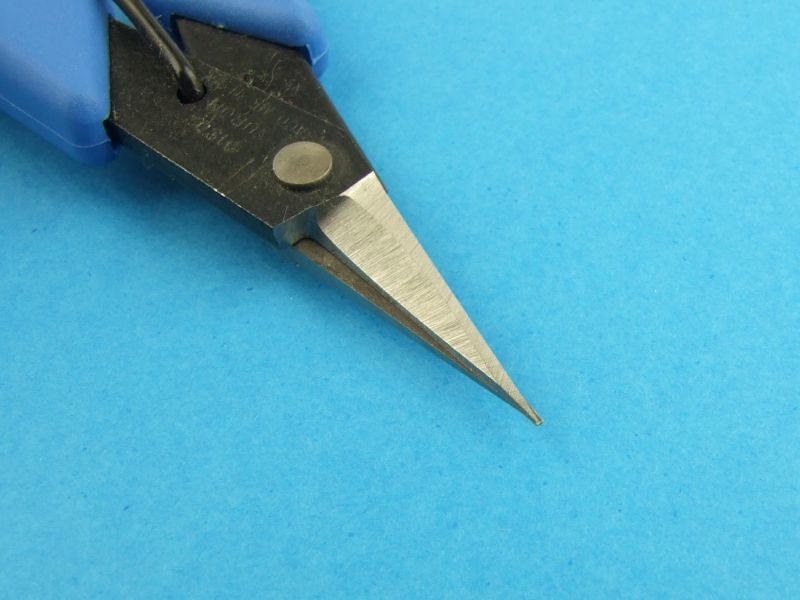
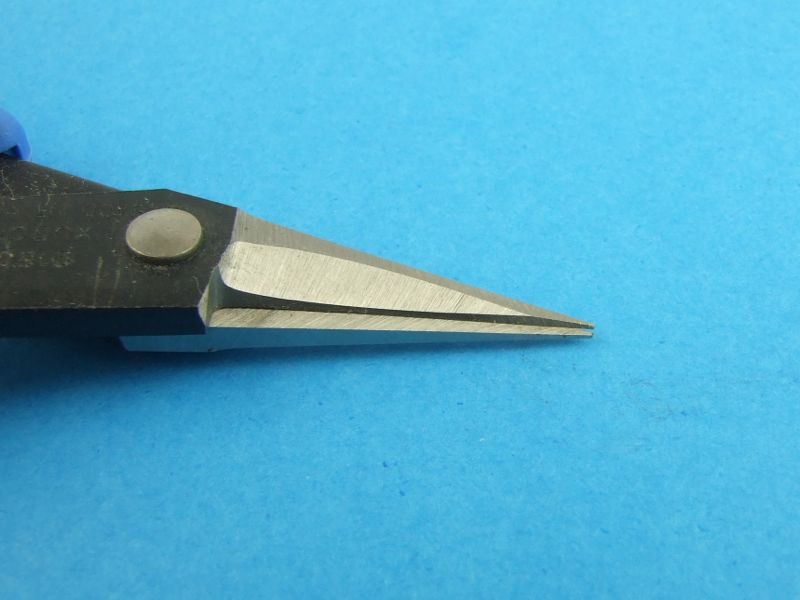
This allows for some very delicate cuts using just the tips of the tines. The movement is quite stiff, but smooth, and affords great control over the cutting action. I've personally been using this set of shears for 12 months now, and can attest to how well they work. To demonstrate, I pulled out a discarded Eduard photo-etched set that still had a couple of unused parts on it:
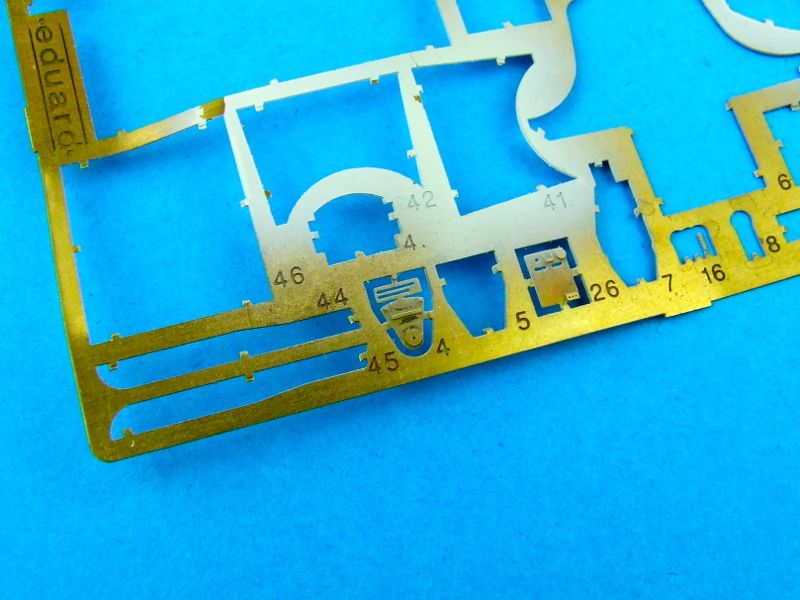
Here is the part after initial removal from the fret:
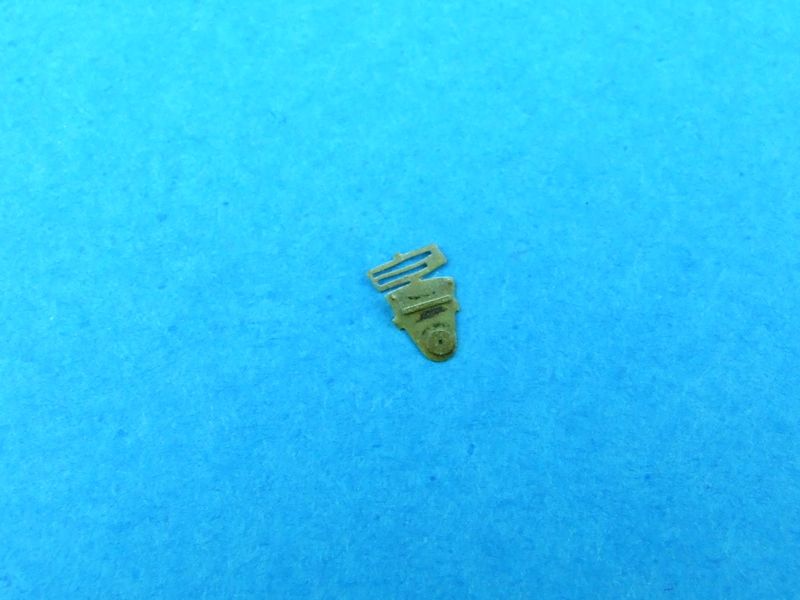
In the past, I'd used the common method of laying the fret flat on a hard surface (a piece of glass or ceramic tile), and using a curved blade to cut through the attachment points with a rolling motion. While this works, it's tedious, error-prone, and impractical for really small parts. Using these photo-etch shears, however, it takes just a few seconds to liberate a tiny part such as the one pictured, which has 3 attachment points to its fret.
You'll note, though, that the photo shows that the part still has some stubs left on it. This is a common result on small parts, or where the gap to insert the shears is very narrow. In my opinion, the real beauty of these photo-etch shears from Xuron is their ability to deal with such burs and stubs, quickly and accurately. Since in action the two tines move past one another, it's a simple matter to orient the shears in such a way that the photo-etch part rests on the lower tine, with its edge aligned with the edge of the tine, while the upper tine is brought down, neatly lopping off the offending stub. I didn't have enough hands to be able to photograph this process, but here's the result on our test part:
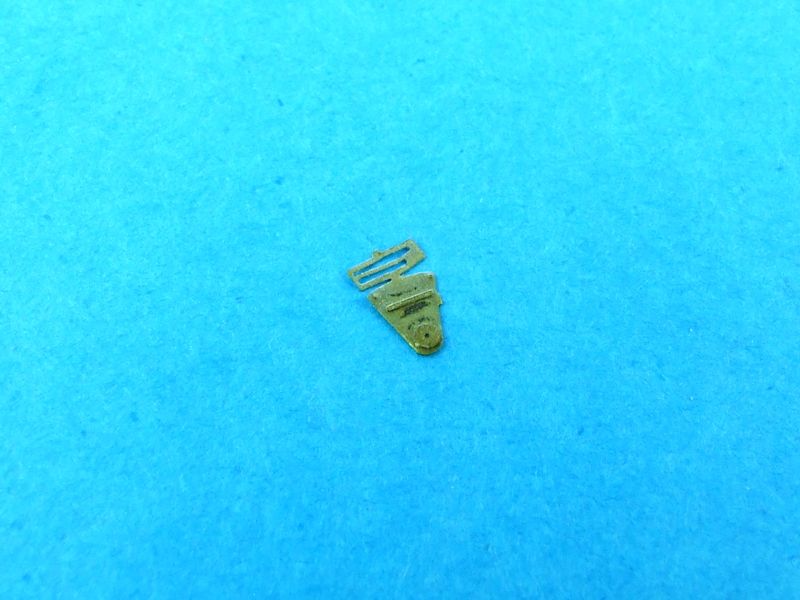
As you can see, we're left with a very neat, stub-free edge that requires no further sanding or filing.
Conclusion
In case you haven't worked it out yet, I'm a huge fan of these photo-etched shears from Xuron, and they have made at least one aspect of working with photo-etched parts an absolute breeze. This tool is a must for anyone using photo-etched parts on their models, and I can't recommend it highly enough.
Thanks to Xuron Corp. for the review sample.
© Kevin Futter 2015
This review was published on Friday, January 16 2015; Last modified on Saturday, January 17 2015
